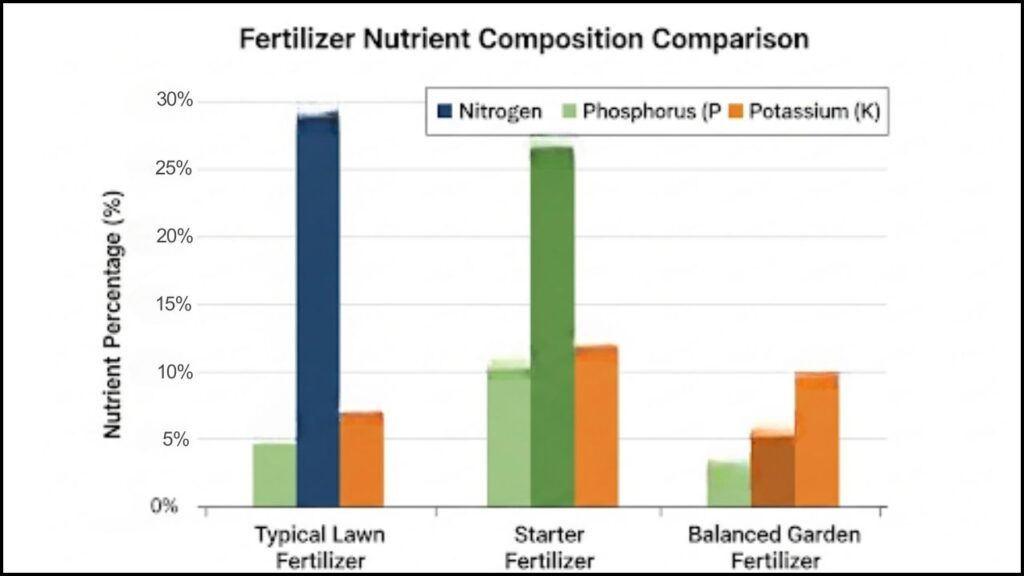
For homeowners seeking a lush, dense lawn, overseeding is a common and effective practice. However, a widespread error fertilizing too soon after spreading new seed—can completely undermine the process. This seemingly simple mistake can prevent new grass seedlings from establishing, leading to a thin, patchy result despite a homeowner’s best efforts. Understanding the specific physiological needs of emerging grass is critical to success.
Why Fertilizing Too Early Poses a Risk
Applying a high-nitrogen fertilizer to a newly overseeded lawn creates a competition for nutrients that the fragile new seedlings cannot win. This is primarily due to the nitrogen “kick” that feeds the existing, mature grass plants. As explained by Dr. Chris Williams, a turfgrass specialist at the University of Georgia, the established lawn responds by growing aggressively and consuming the available nitrogen, overshadowing the new, delicate seedlings. “The mature grass will outcompete the new growth every single time,” Dr. Williams stated. “It’s like trying to start a new business in a saturated market the established players just take over.”
The problem is compounded by the fact that many standard lawn fertilizers contain high levels of nitrogen, which are designed to promote leaf growth in established turf. This type of fertilizer, while excellent for a mature lawn in its active growing season, can be detrimental to germinating seeds. Instead of directing their energy into root development, which is crucial for long-term health, the seedlings are forced to compete for a nutrient source that their stronger neighbors are better equipped to absorb.
The Science of Seed Germination and Root Development
The process of grass seed germination is a delicate one. After a seed absorbs water and splits open, it first sends out a radicle, or primary root, which anchors the seedling and begins absorbing moisture and nutrients from the soil. This initial root development is the most critical phase for a new plant’s survival. According to a report from the U.S. Department of Agriculture (USDA), a strong root system is the foundation for a plant’s resilience against drought, disease, and foot traffic.
When a lawn is overseeded, the goal is to introduce new, viable seeds into the existing turf. The new seeds need consistent moisture and a balanced nutrient environment to thrive. The timing of fertilization is paramount. Applying a starter fertilizer, which is specifically formulated with a higher phosphorus content, is the recommended approach. Phosphorus is essential for early root formation and is less likely to trigger the aggressive growth response in mature grass that high nitrogen does. A starter fertilizer also provides the foundational nutrients—phosphorus (P) and potassium (K)—that the new seedlings need for a healthy start without overstimulating the existing lawn.

The Right Approach: Timing and Product Selection
So, what is the correct timeline for fertilizing after overseeding? Turfgrass experts universally recommend waiting until the new grass has fully germinated and has been mowed at least two to three times. This generally means waiting a minimum of four to six weeks. By this point, the young grass plants have established a rudimentary root system and are better equipped to handle the nutrient demands that a standard fertilizer will create.
The specific timing can vary based on grass type and climate. Cool-season grasses like fescue and Kentucky bluegrass, which are typically overseeded in the fall, will establish roots more slowly in cooler soil temperatures. Warm-season grasses like Bermuda or zoysia, overseeded in late spring or early summer, may develop faster. However, the principle remains the same: root development must precede the application of high-nitrogen fertilizer.
Dr. Eleanor Vance, a lead researcher at the Scotts Miracle-Gro Company, emphasized the importance of using the right product. “We see many people grab the first bag of ‘lawn food’ they see, without realizing the critical difference between a starter fertilizer and a maintenance fertilizer,” Dr. Vance said in a recent industry webcast. “A starter fertilizer gives those baby plants exactly what they need for a strong start, which is phosphorus, not a rush of nitrogen that favors the older plants.”
The Cost of a Misstep: Financial and Environmental Impacts
Failing to properly time the fertilization can lead to a significant waste of resources. The new seed, which can be a considerable investment, may not establish successfully, requiring a homeowner to repeat the process. Furthermore, applying excess nitrogen fertilizer creates a potential environmental risk. When not absorbed by plants, excess nitrogen can leach into groundwater or run off into surface waters, contributing to nutrient pollution and algae blooms in local waterways.
This issue has drawn the attention of environmental and agricultural agencies. The Environmental Protection Agency (EPA) and state-level departments of natural resources have published numerous educational resources and guidelines on proper fertilizer application to mitigate these risks. Their recommendations often highlight the importance of soil testing to determine the precise nutrient needs of a lawn before any application.
The Path to a Thicker, Healthier Lawn
For homeowners committed to overseeding, a simple, three-step process is recommended by turfgrass professionals.
- Prepare the Soil: Before seeding, it is essential to prepare the soil by aerating and raking to ensure good seed-to-soil contact.
- Apply Seed and Starter Fertilizer: Spread the new seed and a dedicated starter fertilizer simultaneously or immediately after seeding.
- Water Consistently: Keep the newly seeded areas consistently moist for the first two to three weeks to facilitate germination.
Once the new grass has grown to a height of about two to three inches, and after its second or third mowing, a standard lawn fertilizer can be applied. This approach ensures that the new grass has a strong head start and can compete effectively with the existing turf, resulting in a thick, uniform lawn. The ultimate goal is not just to see green growth, but to ensure that the new plants have the strong root systems required for long-term health and resilience.
How to Start Growing Hibiscus for a Showcase of Tropical Blooms
